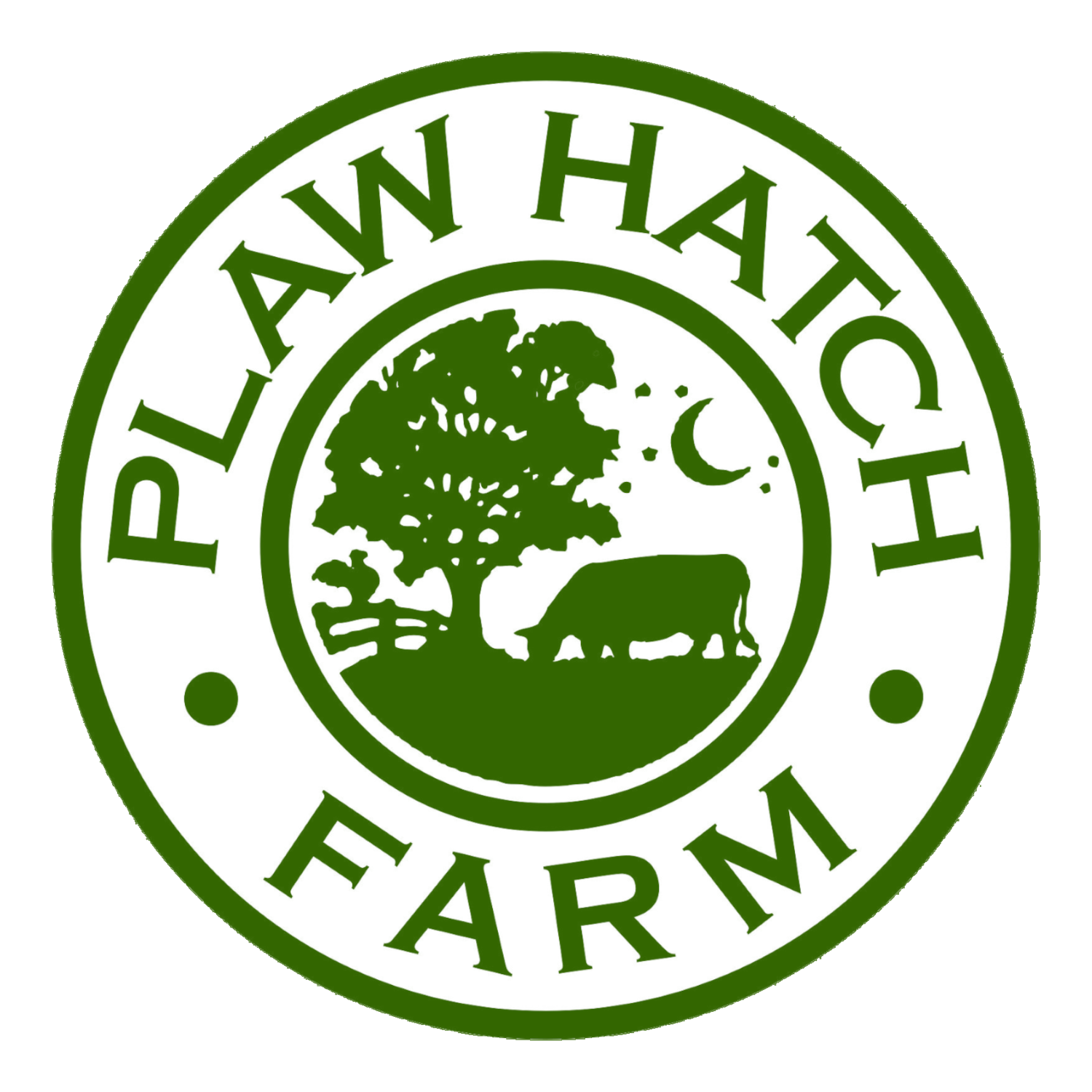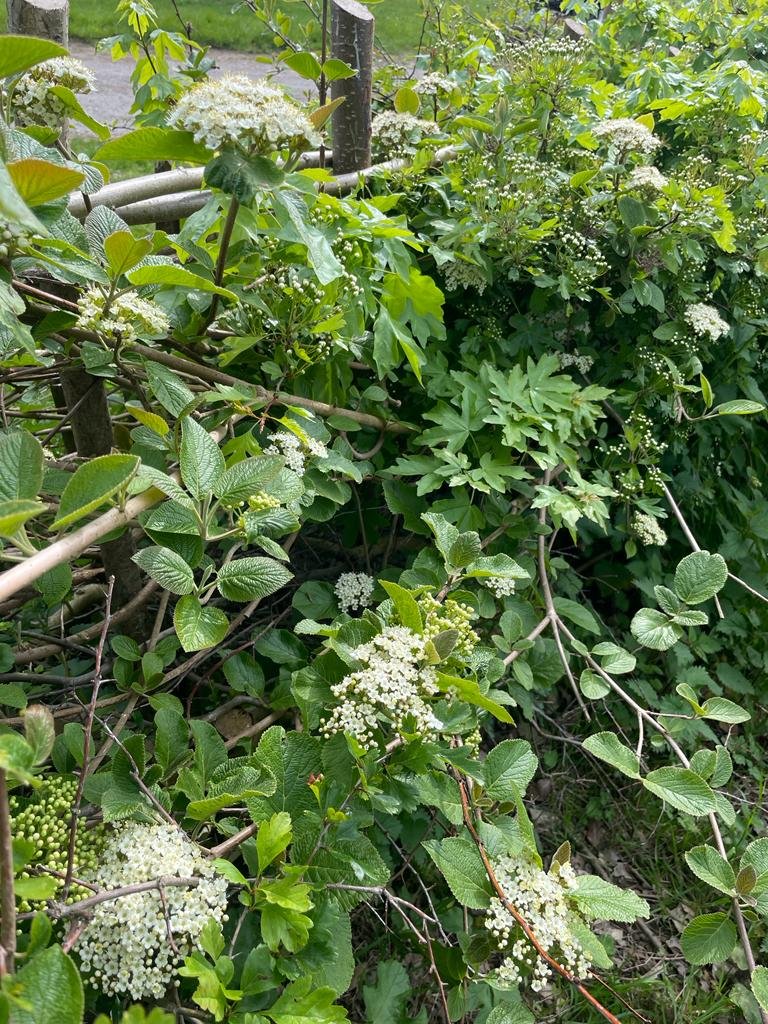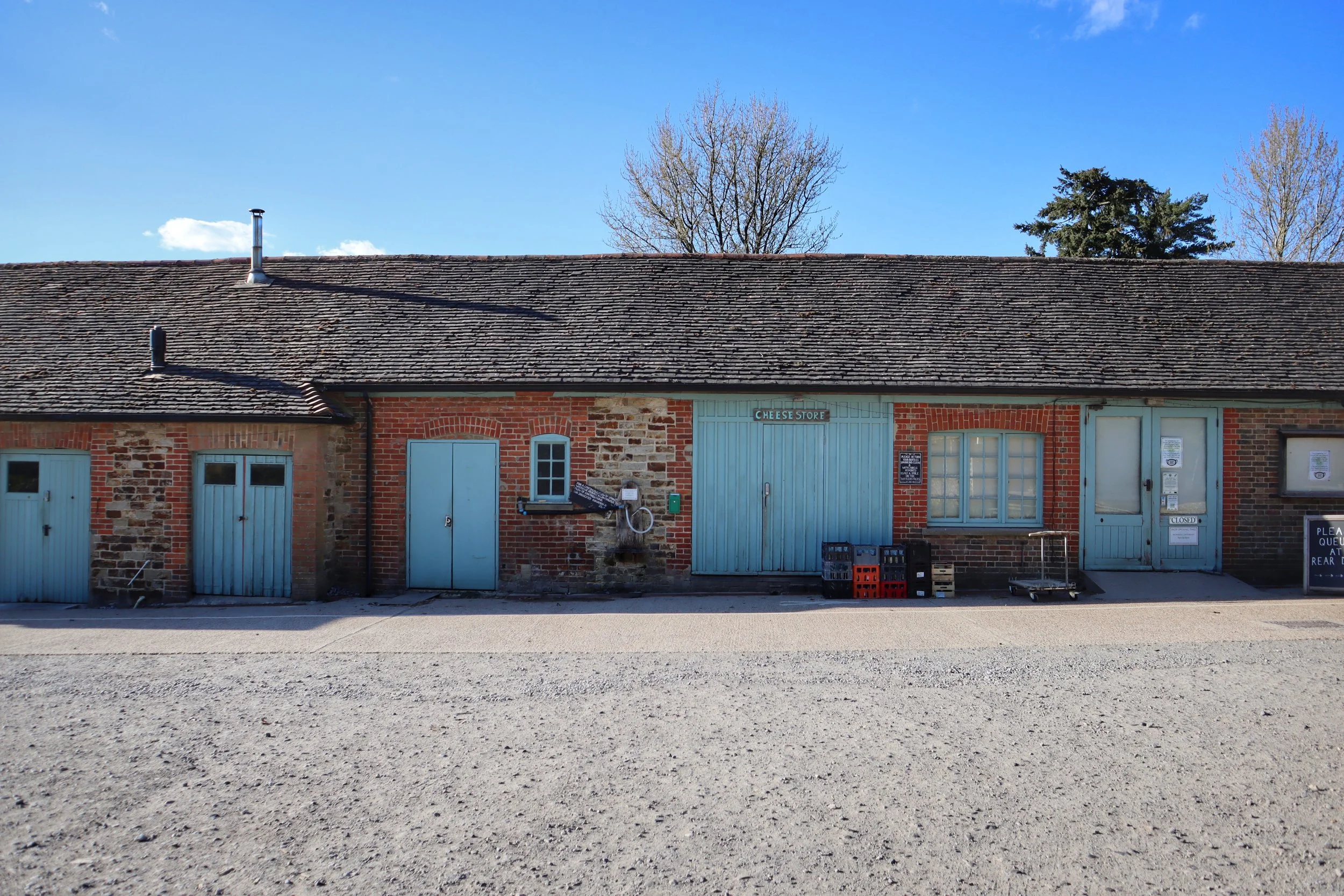Our kind of hedge fund
Gala Bailey-Barker
I grew up next to a farm in the Southdowns where the fields were enormous, intensively farmed arable land and the only hedges that had survived were either flailed to within an inch of their lives or so overgrown that they had become thin lines of trees. After the Second World War, farmers all over the country were incentivised to remove hedges to make bigger fields, and Plaw Hatch did not escape this treatment. Over the years, some hedges on the farm have been replanted and slowly we are adding more. We are also trying to take better care of the existing hedges we already have to encourage biodiversity of all kinds, create shelter for our livestock from wind and sun, as well as enhance their ability to help the water cycle function. That last one is becoming increasingly important when droughts and high rainfall events are evermore common.
We have seen a noticeable increase in insect and bird life since the hedgerow down the main track behind the shop was planted. It runs along Home Field and then Holly Field. It has been a joy to watch it grow as it has become home, food and safety to many small birds, bees, butterflies, moths, and other insects. A kestrel took up residence the first year it was planted, and it has been living on the farm ever since. Something I rarely hear spoken about is the added space for plants underneath, and to either side, of a hedge. This is probably because it is still recommended to treat the land where a hedge will be planted with herbicides before planting; something we would never consider even if we weren’t certified. The hedgerow down the main track was mulched with wool when it was first planted, and as this has rotted away many thistles (see my previous article for all the good they can do) have appeared, along with rosebay willowherb, sorrel, st johns’ wort, meadowsweet, birds foot trefoil, various vetches, yarrow, burnet and many more, all helping to support a whole array of creatures.
When I first came to the farm the land was in a countryside stewardship agreement which dictated biannual cutting of the hedges on the farm, the idea being you could cut half of the hedges one year and half the next. Instead however, “cutting every 3 years means a hedge can provide 3.4 times the mass of berries than those cut annually.”
Perhaps I’m being overly ambitious, but I’m very much hoping over the coming years that we can manage our hedgerows by laying, coppicing or hand-cutting them instead of flailing them. As it stands, most of our hedges haven’t been flailed for 2 years now. Hedge work must be done in winter when the plants are dormant, and of course there are fewer daylight hours to do the work in but hopefully we will be rewarded for it. This winter just gone George and I had a go at coppicing the hedge around our garden; I can say it’s bloody hard work especially while juggling a baby and a 4-year-old, but strangely addictive!
On the subject of hedges, it would be remise of me to not mention deer. Since we started taking a more proactive approach to the management of the deer on the farm our hedges are far healthier. It was brought home to me in 2021 how much damage they were doing to our hedgerows when a temporary fence was removed and overnight they had undermined the whole lower section of the hedge. All of our hedgerows had serious browse lines and had become leggy from the bases being repeatedly grazed by the deer. We live in an area that has massive overpopulation of deer and we will continue to do our part in managing their population for both the health of the land and the deer themselves.
Currently we have 1200m of hedgerows on our main site at Plaw Hatch and this winter that will increase to 1500m as we plant 300m of hedgerow across Middle Field and 400 trees in Bank Field. I’ve been storing up raw wool from the flock for the last couple of years in the hope that we will have enough to mulch this new hedge and the trees. We are hoping to plant the hedge and mulch it with a party of volunteers over 6 weeks in November and early December. In August we should be able to arrange when we can collect our hedging plants and then I’ll start figuring out dates for planting. If you want to hear more, make sure you are subscribed to the newsletter and I’ll keep you updated!










